

Kirk makes a custom cage for the RX-7 (see notes from David Liberman below).
Autopower is a supplier of pre-fabbed cages. I haven't yet called them to see what they have for the RX-7. They make street and race bars, and bolt-in and weld-in cages. They claim to make the only race-approved bolt-in roll cage, but I am not sure of what sanctioning body.
Mostly Mazda is now offering a roll bar.
Other people have had roll bars custom made.
Check the rules in your type of racing for bar diameter, wall thickness, grade of steel, etc. The Autopower bars meet the SCCA Solo II regs.

From: Jim LaBreck - jimlab@earthlink.net
Date: August 19, 1999
Someone else sent me a couple AutoPower links: http://stable-energies.com/autopwr.html http://www.ioportracing.com/rollbar.htm
________________
Date: Fri, 10 Oct 97 07:26:06 -0500
From: "Linthicum, Sandy" (linthias@sandy-ntws.usps.gov)
The Autopower rollbar I tried to install blocked your rear vision, reduce seat travel by 50% and at my height 5'11" was my headrest )( ie, your head without helmet was touching the top hoop). I junked it - wasted money.
For the same $'s when you include the installation, you can have Pettit or the shop that does his cages (Motorsport technology I think) to fabricated a custom welded in or bolt in roll bar. The one they did for me (welded in) doesn't restrict rear vision at all. In fact, I often have to point out to people that there is a roll bar installed.

From: nfberg @ chilepepper.com (Nathan Freedenberg)
Date: 02/10/97 08:17 PM
(other stuff deleted - Steve.)
There are a few commercially available Roll-Bars. Every one I have seen mounts at the corner of the floor by the frame rail and cross member. These could be bolted or welded in. They sit in front of the storage bins and do limit seat travel. I needed to keep the seat travel and did not mind losing the storage bins. I had a custom bar built. Pictures.

Date: Fri, 13 Feb 1998 09:49:57 -0600 Thanks for all the responses about my request for info regarding
bolt-in roll bars in a 3rd Gen. I have some follow-on questions. The
3-4 responses I got all referenced the Kirk Rollbar as being one to
consider. No one mentioned the Autopower in a positive light. The
other option is custom made, which I am strongly considering.
_____________________
Date: Sat, 04 Jul 1998 17:31:16 -0500 Talk with Kirk Racing Products, here in Birmingham. Their number is (205)
823-6025.
______________________
Date: Tue, 07 Jul 1998 16:55:43 -0500 For the person that was looking for pictures of a rollbar install, here's a
rollcage.
http://www.rx-7.com/fd3s/fd-rollcage.html
_______________________
From David's Web site on the
group purchase deal
(in case the page goes away after the deal is over):
__________________
From: Kirk Racing Products (info@kirkracing.com) Thank you for your interest in our products. We have several options
available for the 3rd Gen RX7 depending on your needs.
If you plan to
run something such as SCCA Solo I class or most time trial type driving
schools/track days you may be looking for a 4 point competition bar. We
have one design that allows you to retain your storage bins in the back
and another design that requires that they be removed to gain additional
seat motion. The latter bar is usually preferred by only the very tall
driver.
Either of these would be made of a 2" x .180 wall tubing and run $325
plus shipping. This would be legal through SCCA Solo I.
If you plan to do
more wheel to wheel competition or if you feel that you will be reaching
speeds that warrant a 6 point cage, you may choose either a weld-in or bolt-in
model. The showroom stock design in a DOM weld-in model runs $490 while
a DOM bolt-in runs $540.
If you have a commercial address available for
shipping (assuming Indianapolis area) I should be able to get any of
these products to you for around $60 to $75 shipping. Let me know if you have
any questions or if there is anything else I can help you with.
Julie - Kirk Racing Products _______________
Date: Mon, 02 Aug 1999 23:25:08 -0500 I have pictures of the Kirk racing 6 point roll cage. You can view it from my
web page.
_______________
Date: Fri, 25 Feb 2000 01:49:05 GMT I don't think the price you listed $325 includes the
shipping. $450 is something you pay for having something
already in stock. If you order one striaght from kirk
racing, it may take 2-4 weeks to built. RP has these cages
in stock in which they paid shipping for from AL to Tx.
That's just part of the overhead you have to added in a
business. To give you another Example, we had a group buy
on J&S knock sensor last year. If I remember correctly,
the waiting period was anywhere from 2-3 months. You can
definately get it alot cheaper from direct but there is
always a tradeoff somewhere.
_______________
Date: Thu, 24 Feb 2000 23:53:32 -0500 Speaking of Kirk Racing rollbars. I thought they are built well, but I found
them very irritating. For one you lose the bins in the trunk, the Japanese
roll bars use the shock towers to tie into the frame, much more convenient.
But that's the least of my worries, its the fact that only the driver has
room to move the seat back while the passenger can't. It might not matter to
some, but to me this is a serious problem. It makes taking any reasonable
sized person with you very uncomfortable, renders the front seat useful only
to kids. I would never consider the Kirk Racing.
The RE-Amemyia has the added advantage of mandrel bent tubing that also
contours to the area where the door handles are, making it less intrusive
than any I have seen so far. I will put up a couple of picts on my site in a
few moments so you can see what I am talking about. It mounts in the rear to
the shock towers, it has a diagonal brace that seems adjustable for slack
with time and it is FIA approved, so you are legal to race Schumacher at the
Australian GP :)
Trey (at Rotary Performance (rx-7.com)) can get that roll bar too, it's
in the $900 range
Stop by http://www.efini.net/re.htm.
I will put the picts up soon.
__________________
Date: Tue, 23 May 2000 20:20:56 -0400 Having installed the M2 bar (chrome-moly, 26lbs total weight) I had to
figure some things out and learnt some tricks to make it install easier. Its
so beautifully made and mounts to the shock towers and includes new mounting
plates, new brace, removable diagonal brace and allows total seat track use.
Brian is also working on a diagonal retrofit on the loop as well that's
removable. I highly recommend it to anyone looking for a roll bar. Finish I
believe is up to the owner, I asked for what Brian calls "chromy paint"
which is actually a powdercoating that looks like chrome. It was tough to
install as the tolerances are tight, but I love this bar...the welds are so
beautiful, the craftmanship is second to none (I really mean it). I love
this bar, I just want to hug it and go to sleep with it :)
But the point of this post, I am offering to help anyone close to me install
it...man I love this bar...did I mention I love this bar?
Pricing...I have no clue how much it costs, I still need to square it with
Brian as I paid extra on my end for shipping when it arrived and he paid
extra for shipping on his end (really long story, don't ask) and it's a
prototype, he has all the jigs to make it for production and when we met at
MADS we went over the details for installation and discussed some of the
problems and I told him how much I love this bar...damn I love this bar!
I doubt this bar is SCCA legal as it does stiffen the chassis (I am told
SCCA require roll over protection without adding stiffness, correct me if I
am wrong as its all hearsay), but check if it matters, I am about to find
out this Sunday at the autocross, but god I love this bar, so they better
let me run...because as you might have guessed by now I love this..., okay
okay so I have an emotional attachment to piece of steel, I am sick. If you
only knew about what I do with the wheels _______________
Date: Tue, 23 May 2000 23:25:12 -0400 I will soon, I didn't really have time while installing it the first time
without the diagonal brace. The second time I installed it with the diagonal
brace (I had to remove most of it to fit the diagonal) was at the HOJO with
5 other list members working until 2:30am at the hotel's drop off driveway
Friday night, so taking pics was the last thing on my mind at the time. But
I hope someone did at MADS, if so can you please let us know as this weekend
I will be busy preping the car for the autocross.
There are 4 points, like most standard roll bars it mounts to 2 on the floor
for the loop, but the other 2 points are at the shock towers. It comes with
2 new shock tower mounts. The shock tower mount tops hold the tubing coming
from the loop and a new brace.
The brace currently doesn't have taps for
holding the rear cargo cover but Brian tells me the production version will.
The 2 points on the floor for the loop are held on the other side by a thick
chrome-moly backing plate. I was unable to match the 4 hole in the base of
each side of the loop to the backing place because I didn't have all the
right tools to drill the holes perfectly straight. Next morning Rich Farrell
Sr. got me large 2" washers and 1" washers to lay on top of each other and
use them on the underside with the nut. Its a temporary solution until I get
an appointment with my welder.
There are many small but really smart details
that are difficult to explain, I will show them when I photograph it. I'll
be glad to help anyone in the Northeast install it, perhaps then I can do a
writeup with photos showing it step by step.The tolerances are so small that
if you do not install it in exactly the right order it will not fit easily.
Once it's in though it is solid, making it worth all the effort.
_________________
Date: Fri, 10 Nov 2000 20:07:07 -0800 (PST) My impressions are based on what I believe is one of
the last prototypes. It was the main hoop with 4
mounting points and the rear diagonal.
The finish is very nice. The example I saw was powder
coated a "chromey" silver. The finish was uniform and
after repeated installations and removals, seemed
quite durable.
It fits the contours of the interior very well
(especially along the side of the car, just behind the
seats) and is just about as unobtrusive as a roll bar
could be. The rear supports bolt into the top of the
rear shock towers and allow for use of the rear bins
(which I thought was nice). The fit is very snug and
removal and installation take a bit of effort. It's
certainly not the kind of thing I would be looking
forward to taking in and out every couple of weeks,
but it's not that bad and having 2 people helps
matters greatly.
Although installation and removal were hindered by the
snug fit, once installed there was some movement of
the bar on its mounting posts leading to some
squeaking. This seemed to be alleviated by wrapping
the posts with electrical tape before installation.
Again - - this may now be corrected, as I believe the
example I am familiar with is a prototype.
________________
Date: March 29, 2003 Photos of the M2 bar installed:
________________
tworx7s@zoominternet.net wrote:
I like the M2 better, but the Kirk unit really is the next best thing.
It's more desireable because it is SCCA legal for Solo I competition, and at
less than 1/3 the cost!
>Are you talking about a simple hoop, crossmember and cubby braces? It is regular steel, not sure of the diam. and thickness, but it is SCCA
approved, which means it will save you :-)
>It contains a main hoop conncted to both inner fenders through the jack and
tools panels. You can cut your stock lids for a neater appearance, but the
storage space will pretty much be taken up. There is a seat-back brace bar
and one diagonal as well. There is at least one picture on the internet
that somebody forwarded to me... is that person listening?
Also, when I talked to the main guy at Kirk, he said he would put a point
at the top of the main hoop and make it 1/2" taller for better rearview
visibility and it would still be SCCA legal. No added cost... I think it
came to $337, but can't recall if that was before or after shipping.
___________________
From: Michael Smereka [mike_smereka@yahoo.com] I have the 1 3/4" rollbar, very happy with
it. It includes a cross-brace behind the driver's seat that allows you
to mount a harness, fire extinguisher, etc. Passenger seat recline is
fairly limited, driver's seat not nearly as much:
__________________
Date: Tue, 25 Feb 2003 14:39:22 -0500 ...a few more points:
Better hope you don't get any really tall HPDE instructors or date a
supermodel ;-)
It makes the car pretty cramped...
I rode for a few minutes in my car, and man, is it cramped....
Did I mention it's cramped??? (SMIRK)
Personally, the Kirk does the job, but if you can save up the extra
money for the M2, go for it.
As for the Solo-I requirements, I'd double check, but last I heard that
was heresay.
Obviously the ultimate source for that, is a GCR, and I'm not sure what
about the M2
(never could get an answer from anyone on this list) was the issue in
not being SCCA approved.
Also, keep in mind, lots of folks do custom cages, and that may be a
better option for the ultimate in fit/finish.
But be careful of who you select and make sure you see examples
installed in street vehicles, not in a gutted race/track car. I
initially went this route, but didn't have time to really investigate in
depth the gravity of how many dollars would be sucked from my wallet.
Bill and I also talked about using the main hoop, and getting the rear
piece remade.
Also, mine and Bill's install (about 1 year ago) the hatch struts don't
coexist with the rollbar.
Read: the hatch is one heavy bugger, and loading/unloading cargo is a
HUGE PITA.
I'm told that the placement of the rear supports makes/breaks this, and
I reiterate, in my case, I had to use a port-a-power to get the supports
to get anywhere near close. If I knew I had to be 1/4" accurate, I
might have done it differently, but the install instructions (single
page sheet) didn't say anything about that, IIRC.
Also, I observe now, that my head and the rollbar are awfully close when
I'm sitting very comfortably, in terms of legs.
I worry about being knocked unconscious and try to place the recline and
seat such that my noggin and the bar will avoid a collision. Also, my
install is pretty tight (I think Bill's is too) and you can hear the bar
creak against the vinyl header. Of note, both our cars have sunroofs
(doh!) which may contribute to some of these issues, especially if they
did the jig measuring a base/R1 model (doh! I just now realized
this....WHY DIDN'T I ASK ABOUT THAT THEN!!!!)
Because of the tightness, it is a PITA to get rollbar padding on it, and
IMHO, when I yank the SOB (sorry, it was a real painful install) out, it
ain't gonna look like a black bar, thinking some sort of leather
covering like Ruf does, would be nice ;-)
[but that is a LONG ways off....I just don't want to endure that pain
again....]
But, for the $$$, and if you get an oversize 2", you probably are going
to come out a winner.
If it doesn't look like it is going to fit perfectly, I'd take what you
have, and get a race shop to "tweak" it.
That's what I get for putting it in the weekend before a track school
:-(
______________
Date: Tue, 25 Feb 2003 14:17:14 -0600 The Kirk bar is SCCA approved unless something has changed drastically,
he wouldn't make it if it wasn't. Mark uses the bar in his Solo I car
and specifically designs it around SCCA specifications as far as
everything he's told me.
_______________
Date: Tue, 25 Feb 2003 14:28:04 -0700 I think he's talking about the M2 roll bar. Last I knew, it did not meet the SCCA
specs because it's wall thickness is too thin for chromolly construction. The Kirk
rollbar has always been,and still is approved for SCCA racing, and they can even tech
it for you.
________________
Date: Tue, 25 Feb 2003 17:04:18 -0500 I have had a 1 3/4" Kirk Racing roll bar for several years. Here are a few
of my observations.
The installation was fairly easy - I installed it by myself without any
help in about 3 hours. I had no issues except i had to re-drill one of the
bolt holes on the floor mounting plate becauuse it was impinging on the
tubing itself. Without re-drilling, the bolt would not clear the tubing of
the bar.
After the bar was installed, I sprayed on undercoating over the bolts. The
undercoating was of the spray can variety available at any auto parts store.
I have no rubbing issues whatsoever with the ceiling(I have an R1), hatch
struts or the plastic interior.
I am very happy with my roll bar except that I wish Kirk Racing would make
it in Chromoly (to save weight).
________________
Date: Tue, 25 Feb 2003 15:40:30 -0800 I saw someone mention that the M2 rollbar was contracted out to Kirk. Just
for clarity, I did want to point out that the 2 rollbars appear to be quite
different.
I have the M2 bar in chrome moly, and I got the full deal - 2
diagonals, seat back bar, seat back brace, powder coated black. The bar fit
perfectly, and mounts to the top of the rear shock towers, so you do not
lose the jack cubby bins. Because of one of the diagonals, I lost almost
all passenger seat travel and recline. I believe there are about 3 clicks
of recline, and less than half of the fore/aft travel. This is not a
problem most of the time, but surfaces when I instruct at the track and have
taller students. It gets VERY uncomfortable for them, particularly since
they're wearing helmets to boot.
Nevertheless, I am very happy with it, and
the install is VERY CLEAN, thanks to Doug at Diablo Imports. I can easily
take pictures of the M2 bar if anyone wants them. Thanks to the great
install, there are almost no visible modifications to the interior of the
car - I still marvel at how cleanly Doug put it in. It almost looks like it
came from the factory with the bar in it.
Date: Sat, 01 Mar 2003 04:27:04 +0000 I got the 2 inch Kirk Racing bar for $335.00 plus $62.00 for you come and
pickup freight truck.
With all this talk of being injured if you smack your head on a roll bar on
the street, I did a search and found the following article:
Page 2References:"Federal Register," National Highway Traffic Safety
Administration, US Department of Transportation 1998.Head Injury Reduction
with padding in Roll Bar SystemsPadding has been used for energy management
for decades. The interior of motor vehicles has been identified as an area
where injury can occur in frontal, side, rear, roll over, or oblique
impacts. Head impacts with the roof, pillars and support structures have
been studied by Fan (1998), Monk (1986) and Partyka (1988). Recent rule
making by the National Highway Traffic Safety Administration has identified
padding as a potential mechanism for reduction of head injury. Federal
regulations for occupational protection in interior impacts is given in the
Federal Motor Vehicle Safety Standards rule 571.201. The regulation applies
to interior velocity components including headers, pillars, side rails, roll
bars, and braces and stiffeners. Standards and studies of helmets for energy
management have been reviewed by Becker (1998) and Meyers (1993). Although
it is well known that the padding decreases impact accelerations, a
comprehensive study from the perspective of head injury reduction including
angular acceleration is lacking. The existing standard to determine the
effect of padding is based on the one-dimensional spring-mass impact system
(Federal Register, March 1998). This approach is applicable to calculate
the peak acceleration. It is, however, not possible to directly quantify
the angular acceleration and velocity, and Head Injury Criteria. Therefore,
the determination of these responses during various padding conditions is
necessary to address the biomechanical effects of padding. Furthermore,
such quantification permits the determination of the relative effect of
padding on the biomechanical responses (e.g., reduction of angular
acceleration versus HIC). The present study was designed to evaluate the
variations of head injury biomechanical responses due to various roll bar
padding materials under different impact velocities. The first study was
conducted with three different types of padding examined. All padding was
approximately 25 mm thick. The baseline structure was an unpadded production
brush bar. The first type of foam, Simpson roll bar padding, was directly
attached to the baseline 32 mm diameter steel structure. Simpson (1999)
roll bar padding is a "BeadAll" foam manufactured by DuPont. It is similar
to the foam used in their helmet liners. The 0.9 mm thick cold-rolled steel
metal air gap padding was placed onto a secondary structure with the same
dimensions as the unpadded brush bar and welded to the existing set up to
keep the test configuration the same. A production brush bar with
production foam padding was also tested. Each brush bar was secured in place
to prevent movement and aligned with an approximate 1.93 m long lightweight
thin wall poly vinyl chloride (PVC) tube pendulum. The 5th percentile Hybrid
III female head and neck was mounted at the end of the pendulum. The height
of the pendulum was varied to obtain different impact velocities from 3.4 to
6.7 meters/second (m/s). The impact was offset from the head center of
gravity (CG) by approximately 25 mm. The head was instrumented with a three
orthogonal uni-axial IC 500G sensors model 3031 that measured the
accelerations in the x, y and z directions and an ATA angular rate sensor
mounted at the center of gravity of the head form. The angular acceleration
was derived from the recorded angular rate by differentiation. All data were
collected at a sample rate of 10 to 12 kHz. The acceleration data was
filtered at SAE Filter Class 1000. The HIC was calculated over a 36 ms
interval. The second study was conducted which incorporated a 25 mm CG
offset side head impact. A tri-axial sensor accelerometer array was mounted
in a 50% Hybrid III male head form along with an angular rate ATA sensor.
Freefalling side head drops at approximately 5.4 meters per second were made
onto a 47 mm diameter bare steel roll bar rigidly supported at each end. The
roll bar was padded with standard production roll bar foam and two different
commercial after market foams of 20 to 25 mm thickness and a comparable
thickness metal air gap padding. All data were sampled at 10 kHz. The
accelerations were filtered at SAE class 1000. The 36 ms HIC was calculated
from the resultant tri-axial acceleration and the angular acceleration was
derived from the angular rate sensor. The third study was conducted with a
free falling Hybrid III 50% male head form at speeds of 5.4 m/s. An Entran
EGE-73BQ-2000 tri-axial accelerometer array and an angular rate ATA sensor
was incorporated within the head form. The head form was dropped onto the
forehead with a 25 mm offset from the CG onto a 47 mm bare steel bar. Seven
mm standard vinyl and foam padding, 25 mm commercial racing roll bar
padding, 25 mm Simpson racing roll bar padding, and 25 mm metal air gap
padding were tested.
All data were recorded at 10 to 12 kHz and filtered at SAE class 1000. The
36 ms HIC was calculated based upon the resultant acceleration.
The first study demonstrated up to a 78% reduction in the HIC and a 72%
reduction in the angular acceleration at impact speeds of 6.7 m/s.. The
stock production approximately 25 mm thick brush bar padding gave an
approximate 44% reduction in the angular acceleration and a 55% reduction in
the HIC compared to the baseline production roll bar. All padding reduced
the HIC, linear acceleration, peak angular velocity, and peak angular
acceleration compared to the baseline production brush bar. The greatest
percent reductions occurred at 6.7 m/s. The second experimental side-head
impact study showed up to a 90% reduction in the HIC and an over 80%
reduction in the angular acceleration at impact speeds of 5.4 m/s. The stock
vinyl and foam covering on the roll bar gave an approximate 17% reduction in
the angular acceleration and a 13% reduction in the HIC compared to the
baseline roll bar. All padding reduced the HIC and angular acceleration
compared to the baseline roll bar. The third series of forehead impact
experimental studies demonstrated up to a 90% reduction in the HIC and an
80% reduction in the angular acceleration at impact speeds of 4.5 m/s. The
stock vinyl and foam covering on the roll bar gave an approximate 15%
reduction in the angular acceleration and a 28% reduction in the HIC
compared to the baseline bar roll bar. All padding reduced the HIC and
angular acceleration compared to the baseline roll bar.
Various authors have cited human head injury limits or non-injurious levels
of head angular acceleration. Lowenheim (1975) conducted studies on cadavers
and mathematical analyses and concluded that bridging veins and head injury
can occur at angular acceleration levels of 4500 rad/sec2. Ewing (1975)
studied volunteer Navy pilots on the HyGe sled and found no brain injury for
angular accelerations up to 1700 rad/sec2. Studies with human boxers fitted
with accelerometers on their heads were conducted by Pincemaille (1989). The
studies led to concussion ranges in the living human of 13600 to 16000
rad/sec2. Ommaya (1984) conducted studies with the non-human primate and
scaled a brain injury level in the human of approximately 4500 rad/sec2. A
review of brain injury models by Newman (1998) concludes that HIC may not
predict injury correctly. He also extrapolates from the non-human primate
studies of Thibault and the proposed scaling to the human to suggest that an
angular acceleration of 8000 rad/sec2 is consistent with the lower tolerance
limits of acute subdural hematoma and 12500 rad/sec2 for concussion and
15000 rad/sec2 for diffuse axonal injury. Margulies (1992) and Meany (1998)
have developed various models supported by animal studies to predict human
tolerance levels to angular acceleration. Recent studies by Mishimoto (1998)
have been done to establish the hypothesis that diffuse axonal injury can
occur with translational acceleration. McLean (1996) has shown through
extensive analysis of vehicular injuries that brain injury does not occur
without impact.
In summary, a comprehensive experimental study was conducted to evaluate the
biomechanical effects of various padding materials at different velocities
using anthropometric 5th percentile female and 50th percentile male test
devices. The HIC and angular acceleration were markedly reduced with the
addition of padding materials. This observation was true for all padding
materials and velocities. The present findings delineate the biomechanical
importance of padding materials in the mitigation of head injuries.
[Mail me]
[To Lightning home]
[To my home page]
[Copyright Notice]
From: "O'Dell, Mark"
From: David Liberman (david@rx-7.net)
From: David Liberman (david@rx-7.net)
* Rollbar weighs approx 60 lbs, cage approx 85 lbs
* 4 attachment points on the rollbar, 6 points on the cage
* The rear legs do not bolt to the strut tower, they bolt to the frame through the
little jack/tool storage bins. So, you’ll need to find another place to carry your jack
stuff.
* Either the cage or bar can handle a 3000 lb load (I’m sure there’s a fudge factor
built in).
* The bar is 2” x .120, the cage 1-3/4” x .180
It is highly recommended that padding be used wherever the head may come in
contact with any part of the bar/cage. It’s even required by the SCCA.
The cages come either unfinished or painted gloss black. If you would like it
powder-coated in just about any color, it will be an extra $100-$200. For a
different color/finish paint, it will cost an additional $20-$50 more. Please include
finish information with your order; if you don’t, it’ll be painted gloss black.
Here’s the deal, brought to you by Kirk Racing Enterprises:
SCCA Solo I legal Rollbar, 2” tube frame, does not require removal of bins
(unless you have your seat all the way back): $300.00
SCCA Solo I legal Rollcage, 1-3/4” tube frame, sidebars are at seat-bottom level
and can be made removeable at no additional cost, does not require removal of
bins (unless you have your seat all the way back): $450.00
SCCA Road Racing legal Rollcage, 1-3/4” tube frame, diagonal sidebars (can be
made removeable at no additional cost), does not require removal of bins (unless
seat is all the way back): $450.00
These are bolt-in cages of excellent quality. The rollbar can be installed in less
than three hours (seat removal required). The cages can be installed in less than
six hours (seat removal required).
Date: Friday, July 23, 1999 6:11 PM
(205) 823-6025
From: Steven Kan (skan@ticnet.com)
From: skan@ticnet.com
> To clarify: my Kirk Racing 4 point roll bar with horizontal harness bar
> hoop and diagonal x brace in the main hoop was purchased last summer for
> $300. Current price should be around $325 not $450 as indicated by RP.
> Kirk racing bar is very nice albeit a bit on heavy side
From: Wael El-Dasher (wael.el-dasher@efini.net)
From: Wael El-Dasher (wael.el-dasher@efini.net)
From: Wael El-Dasher (wael.el-dasher@efini.net)
> Any way you can take some pictures of it installed as well as some nuddies
> of it's mount points?
>How many mount points are there?
From: John Demetre (jsesq@yahoo.com)
Subject: Re: (rx7) (3) reviews on M2's new rollbar??
From: Mike Avila
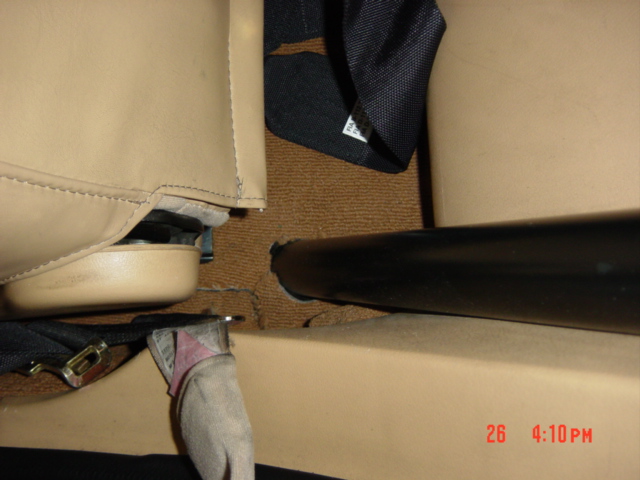
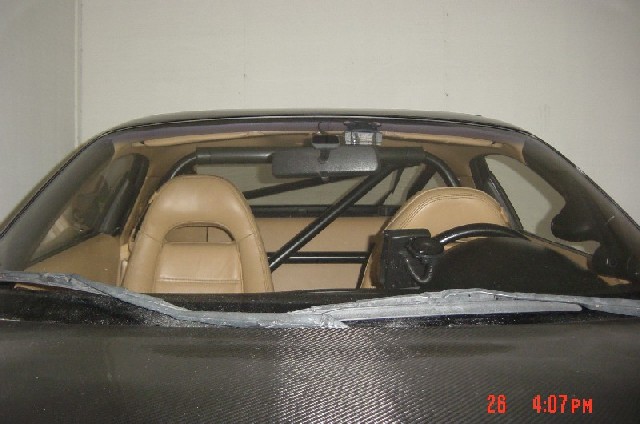
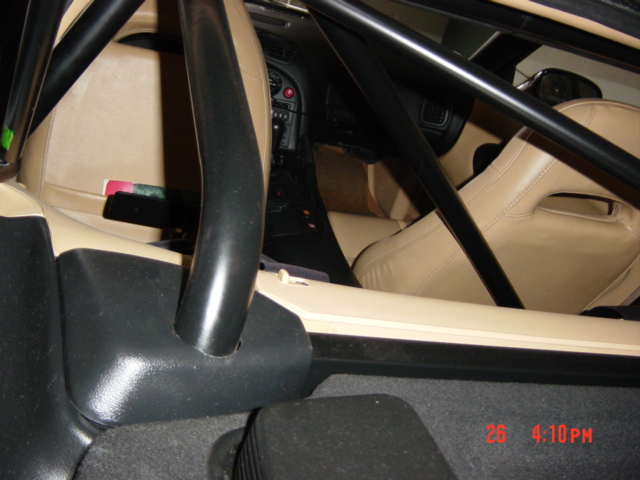
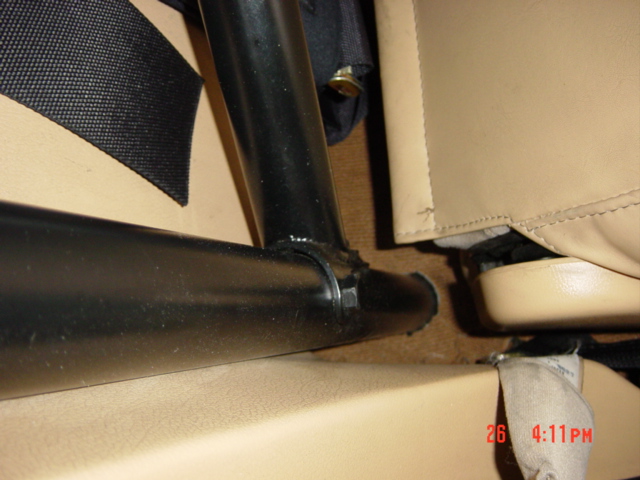
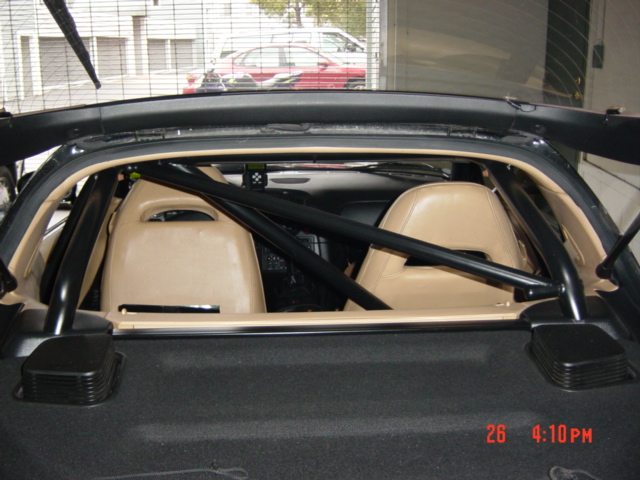
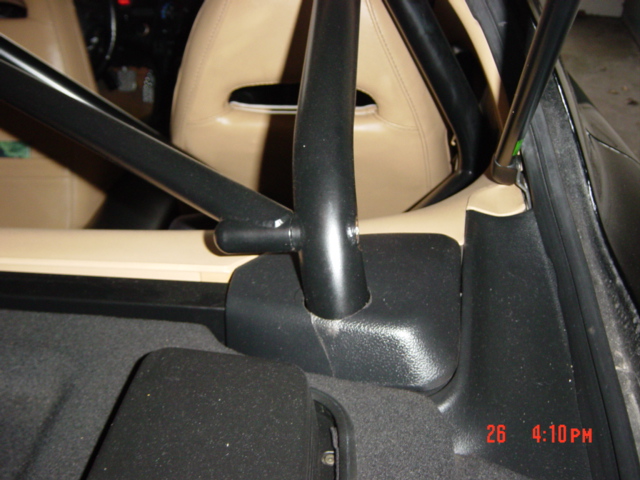
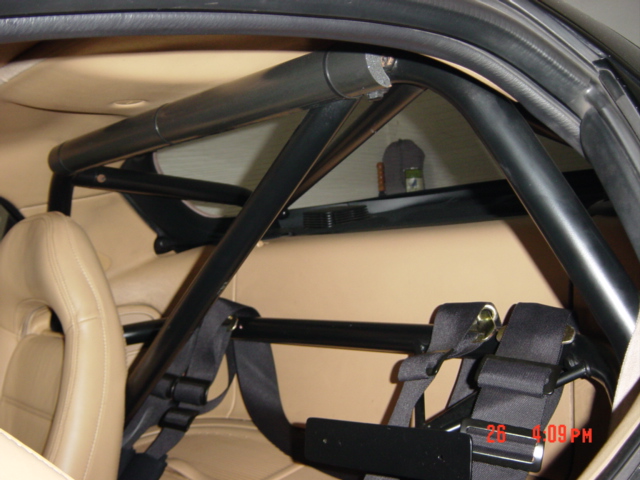
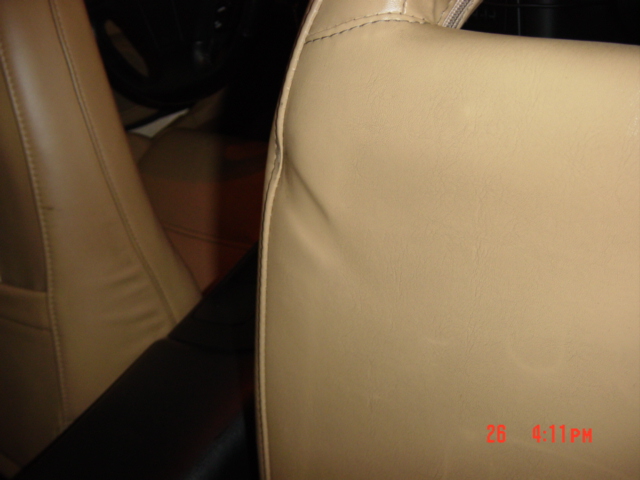
What are the materials? (Chromaloy or mild steel and what thickness and
diameter?)
Sent: Tuesday, February 25, 2003 10:42 AM
Subject: Re: (rx7) Potential Kirk Roll Bar Group Buy
From: "Ashraf Farrag" (afarrag@abitofleisure.com)
>to mount a harness, fire extinguisher, etc. Passenger seat recline is
>fairly limited, driver's seat not nearly as much:
From: "Donnie Garvich" (Donnie.Garvich@sourcemed.net)
From: tworx7s@zoominternet.net
From: "ehkim@optonline.net" (ehkim@optonline.net)
From: "Mike Avila" (mavila@alumni.princeton.edu)

From: "hal 9000" (ta_rex7@hotmail.com)
Subject: (rx7) [3] roll bar and padding
